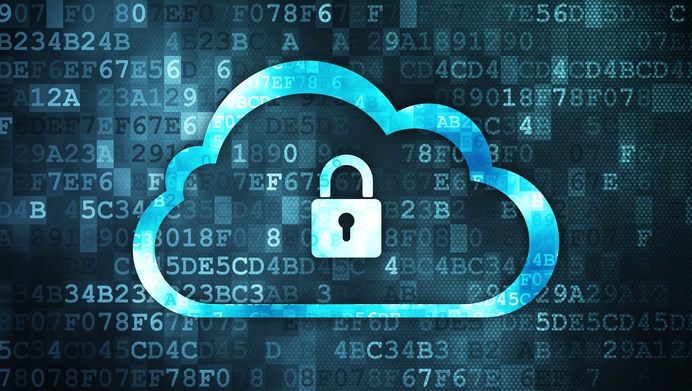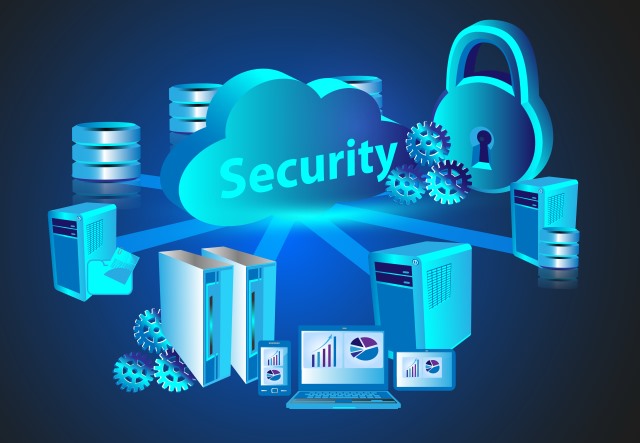Cloud Storage Security: Keep your cloud data safe
Storing data in a cloud eliminates the need to buy, manage, and maintain in-house storage infrastructure. Despite this convenience, the lack of control over cloud-based data remains a common concern for businesses, even though cloud storage security is typically superior to any on-premises protection.
This article is an intro to cloud storage security and the techniques cloud providers use to protect data. Read on to learn about the different aspects of keeping cloud-based data safe and see how to distinguish top-tier providers from vendors with inadequate storage protection.
What is Cloud Storage Security?
Cloud storage security includes a set of policies, technologies, tools, and practices to protect data stored in cloud storage systems from leaks, cyberattacks, unauthorized access, and other threats.
Cloud storage security is fundamental for cloud data protection including data accessibility, data privacy, and data integrity. Protecting cloud storage involves fortifying cloud storage infrastructure, shielding networks, and endpoints, securing cloud data in rest and motion, and monitoring for vulnerabilities and risks.
But before we dive into the evolving cloud storage risks and how to mitigate them, let’s take a look at the basics of cloud storage. This is important because some cloud storage vulnerabilities stem from some of its best features.

The need for Cloud Storage Security
Businesses and enterprises use cloud services because they provide cost-effective and flexible alternatives to expensive, locally-implemented hardware. However conducting business in the cloud means that confidential files and sensitive data are exposed to new risks, as cloud-stored data resides outside of the limits of many safeguards used to protect sensitive data held on-premise. As such, enterprises must take additional measures to secure cloud storage beyond the sometimes basic protections offered by providers.
The rise of the Internet of Things (IoT) technology and the connected office has also made enterprises more reliant on cloud technology, albeit while driving security risks. Even smart printers have been found vulnerable to data leakage, and as more corporate devices become internet-connected, the potential for compromise or unintended leakage increases.
Some risks
Cloud storage provides convenience and other advantages that we previously did not have, for example, scalability, pay-as-you-go, off-site data storage, and access from everywhere. However, we must also observe the new security risks, including:
Data leakage and eavesdropping
- Attacks against cloud storage servers.
- Unencrypted transmission channels for uploading and downloading files.
- Without enabling 2FA, it leads to brute force attacks on cloud storage accounts.
- No access control, anyone can make connections to the servers.
Abuse at the service provider level
- Cloud storage service providers access customer data without permission.
- Unclear privacy policy and terms of service, or sometimes include unfavoured terms.
Data management mistake
- Lack of data classification, uploading data including sensitive ones to the cloud storage without access control and encryption.
- With no privilege control, co-users can access unnecessary data.
- Erroneously sharing sensitive data.
- Account credential theft due to phishing or loss of mobiles/computers.
- Misconfiguration of security measures or using the default setting leads to hackers hijacking the accounts.
Data jurisdiction
For some regulated industries, there might be regulations to store data within the border of a certain jurisdiction. Cloud storage services might not provide that control and transparency of the location of data storage.
Cloud storage service provider lock-in
The data stored and the data format or structure might not be transferrable when the user decides to unsubscribe and switch to another cloud storage service provider.

Cloud Storage Security Solutions
Avoid storing your sensitive data in the Cloud
Keep off sensitive data from the cloud or virtual space as no cloud storage guarantees 100 percent security. Organizations that opt for cloud storage services risk more threats than those that store their files locally. Remove all sensitive data that you intend to store in the cloud. Restrict sensitive data to storage within your controls.
Establish effective password management
Your IT department’s roles include managing multiple accounts of employees and managing various accounts makes it difficult to develop a seamless security framework for your organization. However, strong passwords that are developed and managed with password management tools will help.
Strong passwords require a mixture of letters, numbers, and symbols in no particular order. Change your passwords regularly and when an employee leaves, as your code of ethics no longer binds them.
End users should create passwords that are difficult to guess but easy to remember. If you want to keep track of many passwords, consider software services that create and store passwords. Do not store them on a computer, and remember the master passwords you create.
Use multi-factor authentication
Using multi-factor authentication is safer to prevent the hacking, misplacement, and compromising of passwords. Multi-factor authentication requires another factor to verify identification besides your username and passcode. The third factor may be a voice analysis, unique code, or fingerprint, that only the user has access to, separately generated. All these are effective in the reinforcement of data security as they keep off intruders.
Use encryption
Consider fully encrypting your data while it is stored and transmitted. According to cyber security experts, encrypting data at the source is the most safe process. Make sure you manage the encryption keys yourself.
Use end-to-end encryption when transmitting data to strengthen security, but data in transit is secured with the advent of SDN by virtualizing the network. For security, store all your interactions with your CSP’s server over SSL/TLS transmission.
Encryption enables you to comply with contractual obligations, legal requirements for processing sensitive data, and privacy policies for unused data. Encrypt data when you store it on cloud storage drives.
Also, be sure to encrypt the encryption keys with regularly returned master keys. CSP must provide level domain encryption and specify the fields you want to encrypt (such as CFP, SSN, credit number, and others).
Use of rigorous and ongoing vulnerability testing
The CSP you adopt should use outstanding incident and vulnerability response tools. Solutions from the response tool need to support automated security assessments fully to test for the weakness of the system. It also shortens the time between crucial security audits. Scans are performed on schedule or demand.

Manage access using user-level data security
It would help if you took advantage of the correct role-based access control (RBAC) features that allow setup for user-specific data editing permissions and access. Ideally, the system should enable access to the precise, controlled, and mandatory separation of duties within an organization. Access management helps maintain compliance with internal and external data security standards such as COBIT and HITRUST frameworks and PCI DSS.
Use of a defined data deletion policy
Define and enforce a clear data deletion policy with your clients. At the end of the clients’ data retention period, the data is programmatically deleted as the contract defines, which results in more storage space. It also prevents unauthorized access to data.
Use data backups
Keep in mind that cloud storage will not always replace data backup. When data is deleted from the cloud edge, it is also deleted from the local machine. Most cloud services do not provide perfect revision histories for files synced at boot time.
Use an online backup to protect against data loss. Here, multiple data backups, including those off-site, are essential. Online backup services update your data, often complementing it with detailed revisions. Store your data in a third-party data center and make sure it’s encrypted.
Employee education and sensitization
Educating employees on the risks associated with cloud adoption is crucial. The awareness should be in addition to the implementation of stringent security solutions that protect your data from unauthorized access and enforcement of cloud security policies. It is also crucial to teach them the need to protect their passwords, with secure storage and endpoint services. Employees should avoid sharing passwords or writing them carelessly.
Conclusion
Today, it’s not a question of whether the cloud is secure. Rather, it’s about whether businesses are using the cloud securely to shield themselves from cyber threats. Adopt security practices with the cloud storage security software solutions mentioned above. Keep your business on the cloud safe and secure. After all, the cloud is the future.